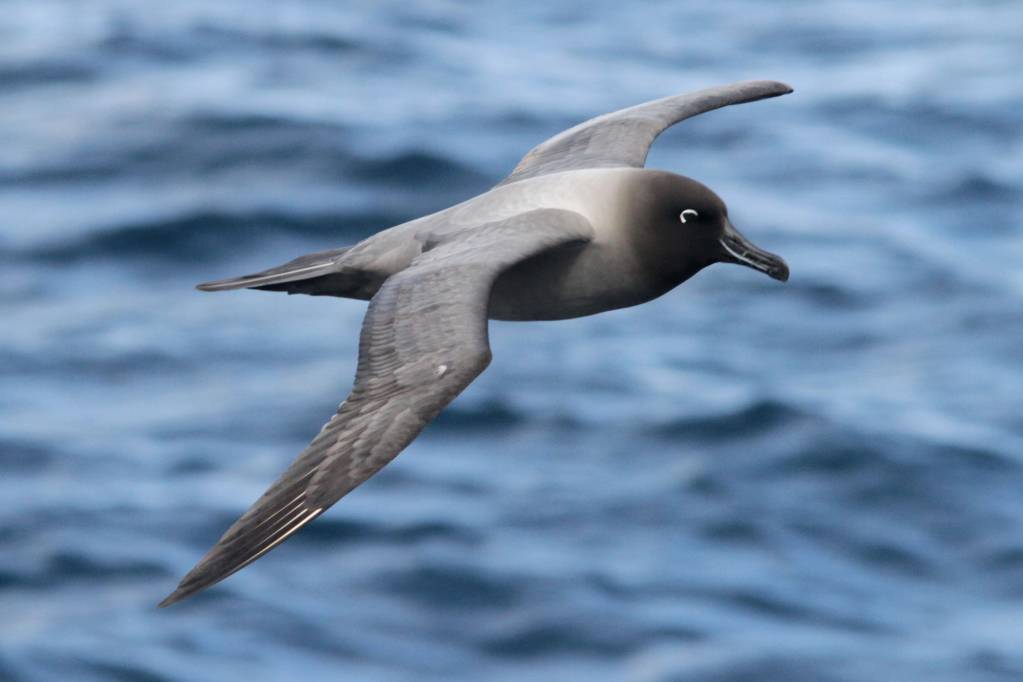Patagonia is the name given to the most southern region of South America. Patagonia encompasses an area bordered by a number of natural barriers, including the West Andes to the west, the Colorado River to the north, the Atlantic Ocean to the east, and the Strait of Magellan to the south.
Geographically, much of the area is known as the Patagonian Desert due to the desert and semidesert climate conditions. The region’s natural borders include several prominent high coastal cliffs, forming a natural barrier around low natural plains with an altitude on the cusp of sea level. The landscape is a tapestry of plains, deserts, rivers, mountains, and even ice-capped glaciers near the southern coast of the region.

Bird-watching, especially the chance to photograph species seldom seen in the northern hemisphere, attracts many enthusiasts to book
Quark Expeditions’ voyages to Patagonia and the Antarctic regions. Photo: Acacia Johnson
Patagonia is divided between two countries: Chile and Patagonia. Consequently, you’ll see references to Chilean Patagonia and Argentinian Patagonia.
In terms of wildlife, there’s an incredible range of animals in Patagonia. Various species of birds also make their homes in distinct areas of Patagonia, which is one of the reasons why explorers are passionate about bird-watching in Patagonia on expeditions throughout the region.

Many species of albatross inhabit the Chilean Patagonia. Photo: Quark Expeditions
What to expect from a bird-watching trip to Patagonia
So what type of birds can you expect from a bird-watching Patagonia experience? Some of the most elusive and rarely seen birds migrate to Patagonia, and your experienced travel guides will help you locate local areas where birds can be observed in great numbers throughout your Patagonia wildlife tour.
The black-browed albatross is one rare bird to see on a bird-watching Patagonia adventure. Approximately 20 percent of the world’s black-browed albatross population lives in and around the Patagonia region. They’re often seen close to the shorelines, often scrummaging near shipwrecks and abandoned human settlements as they search for food. Your adventure guide may help you spot black-browed albatross while approaching Patagonia from the sea.
The Cape Horn Biosphere Reserve is home to two national parks that contain many species of birds. The most likely species you’ll witness here include the southern giant petrel, kelp goose, and Magellanic woodpecker. All of these species are colorful characters of avian animals that will provide amazing photographic opportunities at just the right moment.

The rugged cliffs of Cape Horn provide a secure habitat for a multitude of bird species to nest and lay their eggs. Photo: AdobeStock
Best time to visit Patagonia for bird-watching
Due to its mountainous borders and rocky shoreline terrain, approaching Patagonia by sea requires the right seasonal conditions. The summer season is when the waters between the Atlantic, Pacific, and Southern oceans – all of which converge off the coast of Patagonia – are much calmer for vessels to approach the area.
For that reason, one of the best times to plan a trip to the region is during the month of March. This is the optimal time to approach the land and undertake your special bird-watching Patagonian adventure to remember.
What equipment do you need for bird watching in Patagonia?
Any bird-watching adventure requires the right equipment to capture photos of the winged species in their natural habitats. So what is the best equipment to bring with you on a bird-watching Patagonian adventure?
Quark Expeditions’ Ornithology Presenter and Exhibition Team Guide Noah Strycker are one of our most experienced bird-watching experts. He contributed his recommendations to a helpful bird-watching Patagonian equipment guide we created that breaks down nine of the best binoculars to bring on your bird-watching adventure, comparing them based on budget binoculars, mid-range, image stabilization, and high-quality resolution features.
You’ll also want to have plenty of equipment to protect and maintain the integrity of your binoculars. Weather conditions can be wet and unpredictable in the region so it’s important to have waterproofing material on hand in case of an emergency. You’ll also want plenty of lens cloths and gloves that allow for easy handling of the binoculars themselves.
Tips for bird-watching in Patagonia
If your adventure guides point out your approach near places like the Diego Ramirez Islands, Cape Horn Island, or anywhere near the Beagle Channel—which are integral parts of the Patagonia experience—you’ll want to have your photographic equipment ready. These animals could fly near your cruise ship and potentially directly overhead as you pass through some of these island archipelagos. Stay close to your navigators for tips and tricks on when is the best time to have your equipment ready to go.
The best tip we can share with enthusiastic bird-watchers heading to Patagonia is to join a polar expedition that’s staffed with onboard experts. Quark Expeditions, for instance, includes ornithologists, biologists, polar historians, and other experts whose expertise will enhance your bird-watching experience in Patagonia.
Best way to see Patagonia
For the best bird-watching Patagonian experience, you’ll need the right voyage to set you up for a successful adventure. We recommend Quark Expeditions’ Essential Patagonia: Chilean Fjords and Torres del Paine voyage, which is a 15-day journey spanning much of the southern coast of Patagonia.
You’ll fly from Buenos Aires in Argentina to the southern city of Ushuaia. There, you’ll board your ship and embark on journeys to Cape Horn, Diego Ramirez, Glacier Alley, Torres Del Paine National Park, and many other destinations. Your Quark Expeditions’ guides will share their knowledge of the best locations for bird-watching experiences throughout Patagonia. Make sure you’re ready to shoot when the ideal time comes!









